Recently, my mother visited Saudi Arabia. She knows how to drive in the UK but refuses to do so on Saudi roads. I had to take her everywhere in my car, or she would take a taxi. Like many newbie visitors to the kingdom, my mom was too scared to get behind the wheel.
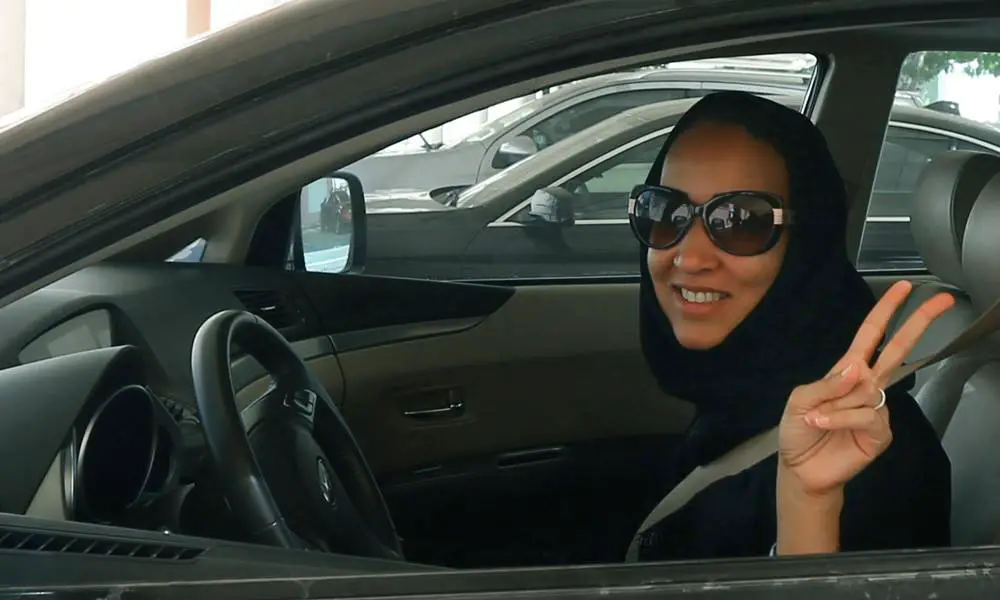
Hopeless Standards On Saudi Roads
My mom was terrified because driving standards in Saudi Arabia are pretty bad.
In towns and cities, drivers, particularly young ones, are often reckless and inconsiderate. They cause many unnecessary road accidents, injuries, and deaths.
Young and older Saudis put their lives in danger by speeding and operating their vehicles carelessly, even on motorways with traffic cameras (Sahere).
Driving here can be a harrowing and nerve-wracking experience.
Table of Contents
(Click link to jump to a section and arrow to return)
1. Your Mindset Before Driving On Saudi Roads
2. Don’t leave Home Without These Documents
3. The Life Threatening Hazards On The Road
4. Strategies To Help Avoid Accidents
Visitors Beware!
So, having survived more than 20 years with only minor accidents, I decided to compile my best tips for women drivers in Saudi Arabia, just in case you feel the same way as my mom when you arrive in the country.
1. Before You Set Out On Saudi Roads-Mindset
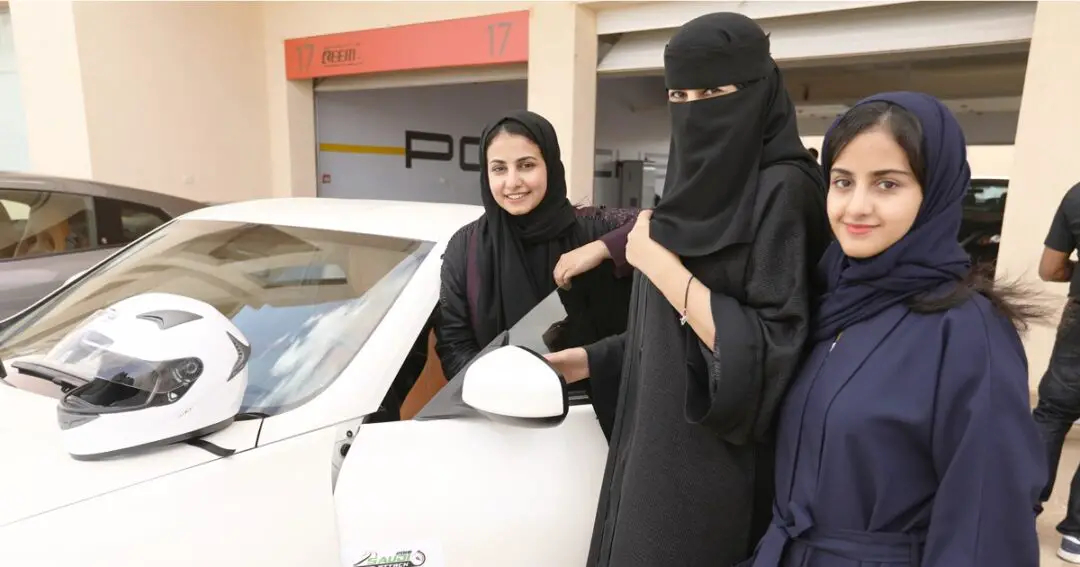
A. Think About Safety
Before you get in your car, make a conscious decision to drive safely.
Visualize yourself being in total control, comfortable, and arriving safely at your destination.
Say to yourself, “Today, I will remain alert, drive safely, and arrive at my destination in one piece.”
Before you set off, your intention is vital. It will determine your driving behavior and impact how other drivers treat you as you move.
Driving with good intentions will help you be a better driver and increase your chance of surviving auto accidents.
B. Obvious Safety Measures
Always wear a seatbelt, front and backseat passengers alike.
Attach your GPS to a stand, but do not hold it in your hand as you drive. You will get a fine.
Follow the speed limits: 60 kph and 80 kph in towns and cities, and 110, 120, and 130 kph on intercity highways.
C. Less Obvious Safety Measures
Saudi men and some women drive very aggressively. Be mentally prepared for a challenging driving experience.
After 4 p.m. and in the evenings are the worst times to drive. Young people are on the move. Many road accidents happen at these times.
2. Check Your Car And Documents
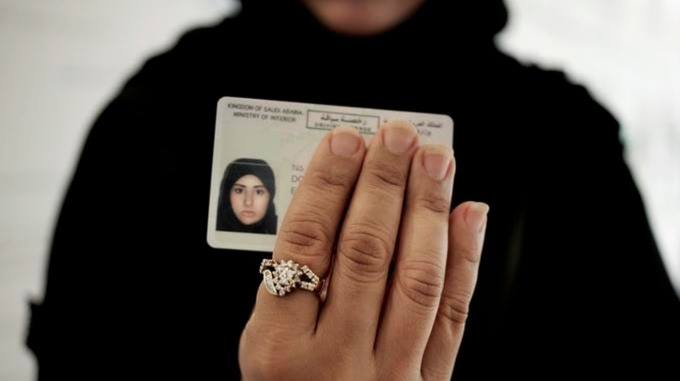
Before you set out, check the engine and the general condition of the vehicle. If you are renting, you’ll have to pay for any breakdown expenses, especially if you have been negligent.
A. Obvious Engine Checks
Ensure correct oil, water, steering, and gear fluid levels before you take the car. Also, top up the air in the tires and make sure they are still roadworthy.
Regularly check that you have sufficient water in the radiator and windshield washer reservoirs.
Be sure there is enough engine oil and that it is clean enough and does not require a change.
Top up the steering oil and gearbox reservoirs if necessary.
Check that there is a spare tire, a carjack, and tools to change tires in the event of a blowout.
Important: Ensure you have a fully inflated spare tire and the correct size for your vehicle.
B. Less Obvious Car And Personal Documents
If the Saudi traffic police or officials from the ministry stop and question you, your paperwork should be in order.
You should have the following documents with you when you drive about the kingdom:
- Passport (Jawaz)
- Home Country Driving Licence (Ruksa)
- Insurance Card (Temean)
- Vehicle Ownership Card (Istimara)
- Soft copy of visitor tourist visa or eVisa (Tasheer)
- A valid Credit Card
- A Saudi Address (Hotel)
Also, examine the rental car fees. Are they for unlimited mileage, or do you have to pay a small amount per kilometer?
Make sure you have the contact number handy for Najem insurance. In the event of an accident, call them and wait an hour.
An insurance official will drive to the scene of the accident. They will assess the damage and determine who caused the accident.
Note that visitor health insurance is mandatory in Saudi Arabia. However, it only covers the costs of emergency treatment.
It does not include follow-up hospital stays, medication, or ongoing doctor’s fees.
3: Driving Your Car On Saudi Roads-The Hazards
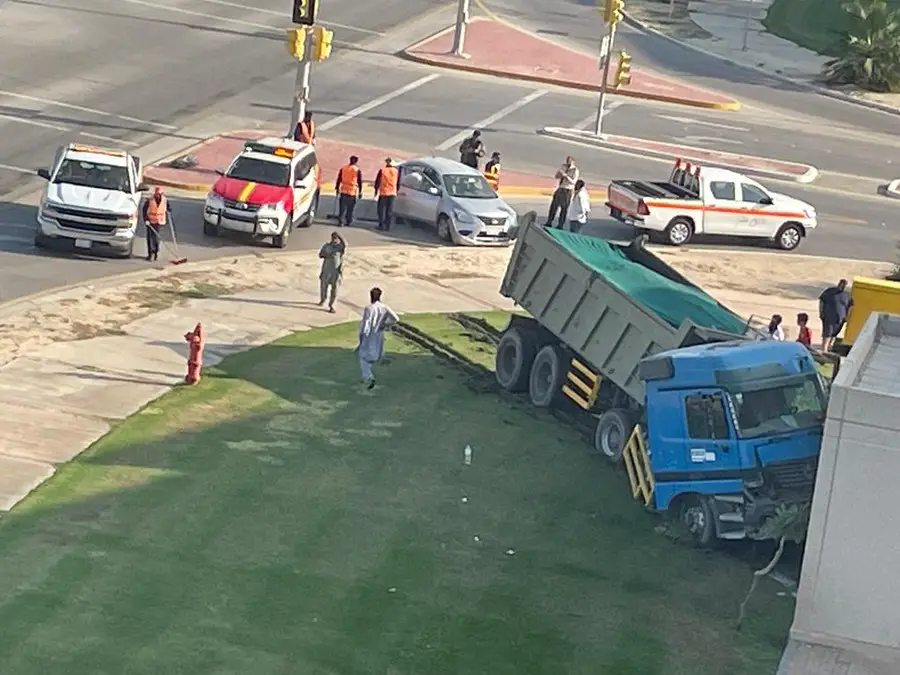
The Main Causes Of Car Accidents
As you drive on Saudi roads, you should know the main hazards.
Remember, the following are the principal causes of crashes, injuries, and deaths.
- Driving Too Fast
- Driving Bumper to Bumper
- Distractions & Risk Taking
- Running Traffic Light
A. Driving Too Fast
Young Saudis drive excessively fast and erratically, especially on highways. The speed limit is 120 kph and 130 kph on some major roads.
High-speed vehicles use the left lane or the overtaking lane. At high speeds, drivers expect others to get out of the way so they can pass.
To get you out of the lane, drivers will flash their headlights a long way behind you. You can see them flashing their lights at a distance in the rearview mirror.
Move, or they will force you into the middle lane to pass by.
B. Driving Bumper to Bumper
Some stubborn drivers refuse to get out of the fast lane to allow speeding drivers to pass.
In this case, Saudi drivers will begin driving bumper to bumper.
To force you out of the lane, they will come dangerously close at high speed to the back of your car as you are traveling.
Often, you can see two, three, or more vehicles driving bumper to bumper in a chain at very high speeds.
It often results in serious car pileups, injuries, and deaths.
You may use the far left lane, but proceed with extreme caution.
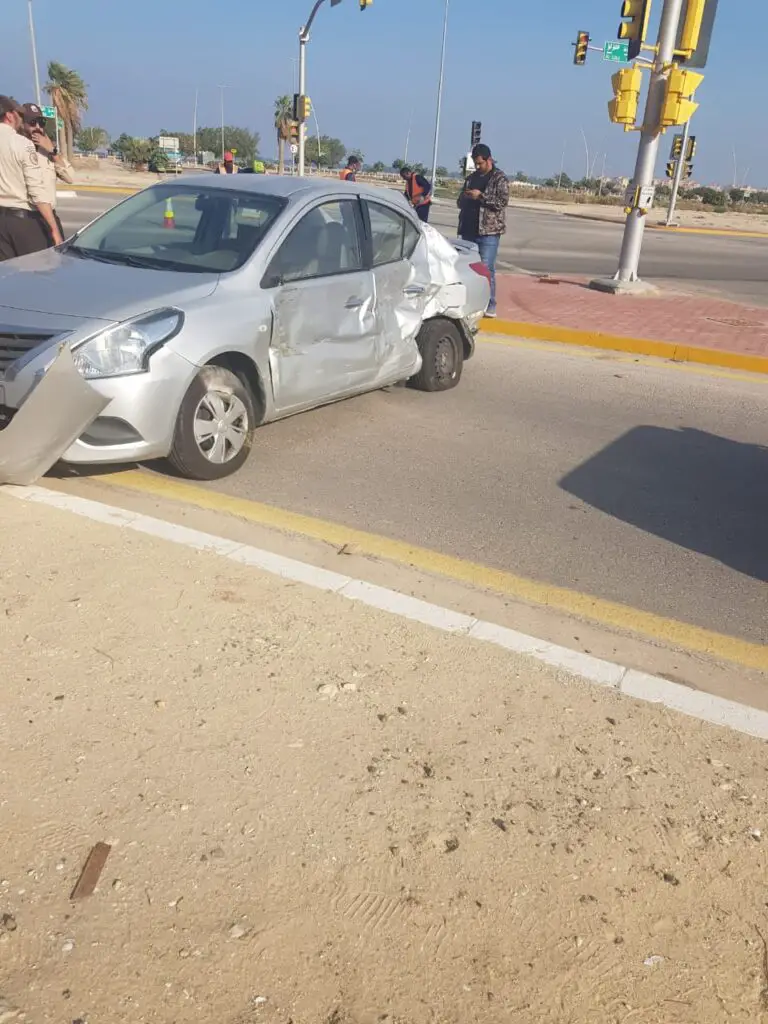
C. Distractions & Taking Risks
Some are illegal, but the usual distractions such as talking on the phone, texting, eating, and chatting with passengers are other causes of many accidents in the kingdom.
Also, people frequently drive carelessly, lose concentration, and cause collisions when they are in a rush to get somewhere.
You see this a lot in the traffic around Saudi towns and cities. Everyone seems to be in such a hurry all the time.
D. Running Red Traffic Lights
You can see serious car accidents at intersections and traffic lights.
In an attempt to beat the light before it turns red, young drivers enjoy traveling at high speeds toward traffic lights.
There is a 5-second delay before the green lights turn red. Drivers use this brief delay to jump the red lights at the intersection.
Often, their timing is poor. Other vehicles entering the intersection from the left or the right can cause high-impact collisions, injuries, and fatalities.
4: Accident Avoidance Strategies
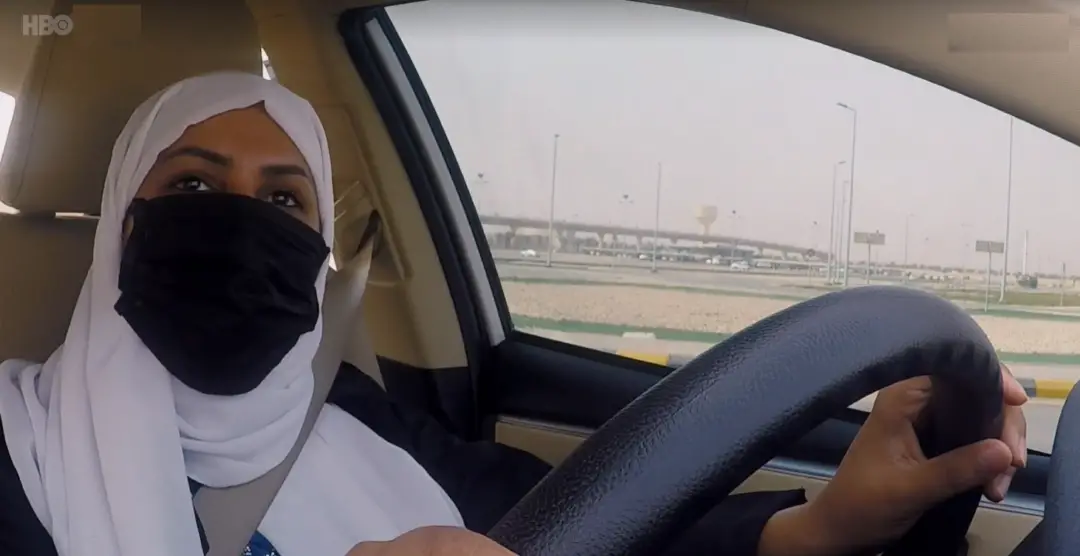
A. Dealing With High Speeds
Do not drive too fast, and always be wary of speeding cars.
Impatient drivers will honk their horns to move you out of the way. Do not allow their impatience to put you at risk.
Let them wait a few seconds until it is safe for you to move aside or change lanes.
Also, be constantly on the lookout for speeding and harassed motorists.
Keep checking your mirrors to anticipate what is happening behind and ahead of you.
B. Dealing With Bumper to Bumper Drivers
I deal with bumper-to-bumper drivers by avoiding driving in the fast (left-hand) lane.
However, Saudi drivers won’t care if you are a female driver. They will force you to move out of the lane regardless.
I strongly advise you to use the middle lane on highways most of the time as you drive.
Large trucks, delivery drivers, and tow vehicles use the slow (right-hand) lane. The weight of these vehicles in the hot sun causes large depressions in the road surface.
It becomes bumpy and almost impossible for small cars to travel safely in the slow lane.
The middle lane is the safest and easiest lane to drive in. All car drivers routinely use the middle driving lane on Saudi highways.
C. Dealing With Risk Takers And Distracted Drivers
Knowing common driver distractions can help you avoid accidents on Saudi roads.
The most common distraction is using handheld devices such as phones for calling and texting.
You cannot control others, but you should use Bluetooth headphones during phone calls and keep your mobile device on the dashboard phone stand.
As you overtake other drivers, give other drivers a wide berth and be aware of distracted drivers swerving across the road.
Also, keep your distance behind other vehicles and give yourself lots of braking time. Other drivers behind you also need time to stop if you brake suddenly.
Keep an eye out for drivers who are zigzagging and speeding through traffic. These also cause many accidents.
D. Dealing With Drivers Running Red Traffic Lights
When the traffic lights turn green, I usually pause for a few seconds before pulling into the intersection.
Then, I scan the road, looking left, right, and straight ahead before pulling out.
This strategy has helped me avoid collisions caused by young drivers who rush through intersections when the light is red.
I suggest you always do the same.
Related Questions For Women Drivers

What Should I Do If I’m In A Car Accident?
Do not move your vehicle, even if you get stuck in the middle of the road. Wait for the traffic police to arrive. Also, call the Nejam insurance company. A representative will come to the accident scene to assess the damage and decide who caused it.
If you are injured, an ambulance will take you to the hospital. Your visit visa insurance will only pay for emergencies; it will not pay for additional hospital stays or medical expenses.
What Should I Do If My Car Breaks Down While Driving?
If you break down on the highway, stay with your vehicle and remain in the shade. Do not try to walk far from the car. Position your red triangle 10 meters behind your vehicle and call roadside rescue. They will send a tow truck to haul your car to a vehicle repair shop. You must pay a towing fee to the truck driver. They determine the cost based on the distance between the repair shop and where you broke down. Towing charges start at SR 200 and can reach up to SR 1,000.
What Should I Do If My Petrol Runs Out?
Keep a large plastic canister handy in the car. Stand behind the car on the hard shoulder and wait. Position your red triangle 10 meters behind your vehicle, and soon a kind person will stop, drive you to a gas station, wait for you to fill up your canister, and then drive you back to your vehicle so you can refill your gas tank. While it can be risky, women generally are very safe, and people will be more than happy to help.
What Should I Do If I Drive At Night In Poorly Lit Areas
Roads between cities are poorly lit and can be treacherous. Many accidents occur at night on intercity highways due to poor driving conditions. If you must travel at night, check that the rear and headlights of your vehicle are working well. I prefer to travel in the mornings before the sun rises and the weather gets too hot or when the sun goes down in the cooler evenings.
What Should I Do If I Get A Speeding Ticket?
Exceeding the speed limit will result in a violation notice via SMS. You pay the SR 300 fine using a direct debit or credit card. Before leaving Saudi Arabia, immigration officials expect you to settle any outstanding traffic fines at the airport or border.
What Happens If I Use My Phone While Driving?
It is perfectly legal to use your mobile device if you have it on a dashboard stand. However, if you have the device in your hand, traffic police using roadside cameras will issue you citations with SR 500 fines for each infraction. In Riyadh, using the handheld GPS resulted in two violations for me in quick succession.
What Should I Do If I Drive Through A Red Light?
There is a hefty penalty of SR 3,000 for running red traffic lights. An automatic camera or a traffic police officer using a roadside camera records the infraction. You must pay the fine via direct debit or credit card. Before leaving Saudi Arabia, immigration officials at the airport or land border will expect you to pay all of your fines.
What Should I Do If I Run Out of Drinking Water?
If you have no water, drive to the nearest service station and buy more. At a roadside breakdown, try to remain in the shade. Position your red triangle 10 meters behind your vehicle at night and stand in front of or behind your car. Using the rear or headlights, you should be well-illuminated. Quite soon, a kind person will stop, give you water, or drive to a gas station to buy you some.
What Happens If I Park Illegally?
If you park illegally, the traffic authorities will tow your car, keep it in the compound, and issue you a SR 300 penalty. You will also have to pay extra towing and vehicle storage fees.
What Should I Do If I Kill or Injure Someone in A Car Accident?
Wait for the ambulance and traffic police to arrive, so they can take the injured or deceased person who has died in a car accident to the hospital as soon as possible. Also, call the Nejam insurance company. A representative will come to the accident scene to assess the damage and determine who caused it.
If you cause an accident, the injured parties will make an insurance claim on your visit visa insurance. For injuries caused by car accidents, your insurance company will pay for emergency care and prescription drugs. In each instance of death by road accident, they pay up to SR 2,000,000.
